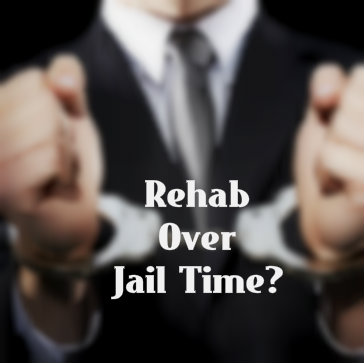Treatment For Drug Offenders Saves California Millions
Significant numbers of the people who commit crimes in America are affected by clinically diagnosable symptoms of substance abuse or substance addiction. Current evidence indicates that successful treatment of these individuals’ substance-related issues substantially reduces the chances that they will commit additional crimes in the future. According to results reported by the National Institute on Drug Abuse, successful treatment of criminal offenders with substance-related issues also carries a lower financial burden for society than the reincarceration of those individuals who continue their involvement in illegal activity.
Drug Abuse And Jail Time
 The close connection between substance problems and the chances of ending up in jail or prison is well documented. For example, figures compiled by the National Institute on Drug Abuse indicate that roughly 50 percent to 66 percent of the people incarcerated in a state jail or prison, or in a federal facility, have symptoms that could qualify them for an official diagnosis of alcohol use disorder (alcohol abuse or alcoholism). In addition, figures compiled for the year 2012 by the Substance Abuse and Mental Health Services Administration indicate that just over 25 percent of U.S. adults recently paroled from prison or under supervised prison release currently abuse either marijuana or some sort of prescription medication. Furthermore, well over a quarter (30.2 percent) of all U.S. adults who receive probation for criminal activity abuse marijuana or a prescription medication.
The close connection between substance problems and the chances of ending up in jail or prison is well documented. For example, figures compiled by the National Institute on Drug Abuse indicate that roughly 50 percent to 66 percent of the people incarcerated in a state jail or prison, or in a federal facility, have symptoms that could qualify them for an official diagnosis of alcohol use disorder (alcohol abuse or alcoholism). In addition, figures compiled for the year 2012 by the Substance Abuse and Mental Health Services Administration indicate that just over 25 percent of U.S. adults recently paroled from prison or under supervised prison release currently abuse either marijuana or some sort of prescription medication. Furthermore, well over a quarter (30.2 percent) of all U.S. adults who receive probation for criminal activity abuse marijuana or a prescription medication.
Medical Benefits Of Addiction Treatment
More than four out of five people in jail or prison with diagnosable substance problems don’t receive treatment for those problems while incarcerated. This means that the vast majority of affected individuals finish their sentences with their abuse or addiction issues intact. Statistically speaking, these individuals have an unusually high chance of committing more crimes, whether in direct support of their substance use or for other purposes. Current evidence strongly supports the usefulness of substance treatment for incarcerated men and women. Specific treatment approaches that produce positive results include both the use of substance-specific medications and the use of substance-specific counseling or behavioral therapy. Treatment settings that produce positive results include long-term residential communities called therapeutic communities (which work both inside and outside of a daily prison environment), the use of specialized courts that mandate both treatment participation and consequences for criminal activity, and the use of a specific form of case management called TASC (Treatment Accountability for Safer Communities).
Is Drug Treatment Cost-Effective?
The 2014 report from the National Institute on Drug Abuse details the results of a 2013 study published in the American Journal of Public Health by researchers from the University of California, Los Angeles. These researchers analyzed the financial impact of a California law, called the Substance Abuse and Crime Prevention Act of 2000, which mandated that people with little or no history of involvement with the criminal justice system receive parole for certain drug-related activities if they agreed to attend a suitable form of substance treatment.
The researchers gathered financial data from 42,000 active cases between the middle of 2001 and the middle of 2002 and compared that information with financial data from 47,000 active cases between the middle of 1997 and the middle of 1998. All of the people in the first group qualified for treatment under the Substance Abuse and Crime Prevention Act; all of the people in the second group would have qualified for treatment under that law had it existed at the time. After calculating all of the costs involved, the researchers concluded that treatment of offenders dealing with serious substance-related issues saved California an average of $2,300 per person. This equated to a total savings of roughly $100 million in a single year. Most of the savings came from reduced costs to the California prison system stemming from the need to house fewer individuals.
Despite the savings produced by treating first- and second-time offenders affected by substance issues, California stopped providing funding for enforcement of the Substance Abuse and Crime Prevention Act after 10 years. The authors of the study published in the American Journal of Public Health note that financial costs for dealing with the community-wide effects of substance-using criminal offenders are steadily trending upward. They also note the usefulness of programs such as the one employed in California throughout the first decade of the 2000s. This usefulness includes both economic savings and the achievement of substance treatment results for criminal offenders that match up well with the results gained by people not involved with the criminal justice system.



